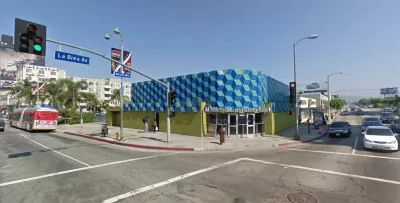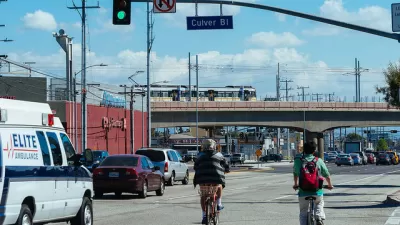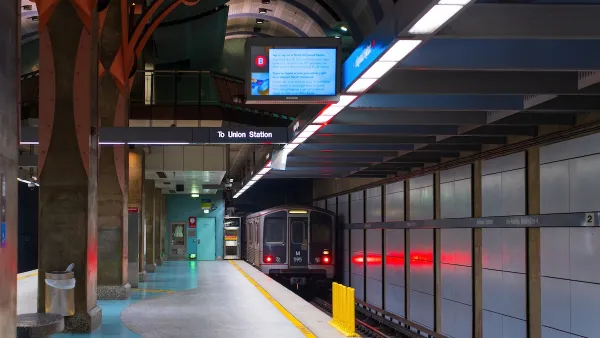During a time when there are apps and websites for just about everything, some transit agencies are turning to storefronts to better serve their customers.

It may not be as widely known as Melrose Avenue or Rodeo Drive but La Brea Avenue holds its own among Los Angeles’ trendy streets. Until recently, an arresting storefront of shimmering turquoise and teal tiles stood at the intersection of Wilshire Boulevard amid the artisanal pizza restaurants, mixology bars and vintage clothing shops.’’
Despite appearances, it didn’t sell Japanese denim, nor did it spin drum-and-bass until 2 a.m. Far more humbly, it sold transit passes, collected lost items, and dispensed — for free — information about the nation’s second-largest transit agency.
The center was recently relocated to make way for Los Angeles Metro’s subway extension, but when it was open, it set an important tone of the agency’s relationship with the riding public.
Transit agencies, whether they run buses, trains, ferries, bike share systems, or other mediums of mobility, exist in a state of paradox. While their vehicles, signage and street furniture is highly visible and they serve millions of customers each year, many lack a physical connection with their customers. But some transit providers are working to change that.
During a time when there are apps and websites for just about everything — including purchasing train tickets and viewing schedules — some transit agencies are turning to storefronts to better serve their customers.
“What it really provides is for somebody to be able to walk in and get immediate service. I think it satisfies an immediate need,” said Adrian Paniagua, supervisor of San Diego Metropolitan Transit System’s customer service center. “I think the philosophy here is it’s an essential component to overall customer satisfaction. We have a 90-plus percent satisfaction rate with our customers. We want to keep it that way.”
FULL STORY: Storefront Service Centers Put Transit Agencies on Solid Footing

Planetizen Federal Action Tracker
A weekly monitor of how Trump’s orders and actions are impacting planners and planning in America.

Maui's Vacation Rental Debate Turns Ugly
Verbal attacks, misinformation campaigns and fistfights plague a high-stakes debate to convert thousands of vacation rentals into long-term housing.

San Francisco Suspends Traffic Calming Amidst Record Deaths
Citing “a challenging fiscal landscape,” the city will cease the program on the heels of 42 traffic deaths, including 24 pedestrians.

Amtrak Rolls Out New Orleans to Alabama “Mardi Gras” Train
The new service will operate morning and evening departures between Mobile and New Orleans.

The Subversive Car-Free Guide to Trump's Great American Road Trip
Car-free ways to access Chicagoland’s best tourist attractions.

San Antonio and Austin are Fusing Into one Massive Megaregion
The region spanning the two central Texas cities is growing fast, posing challenges for local infrastructure and water supplies.
Urban Design for Planners 1: Software Tools
This six-course series explores essential urban design concepts using open source software and equips planners with the tools they need to participate fully in the urban design process.
Planning for Universal Design
Learn the tools for implementing Universal Design in planning regulations.
Heyer Gruel & Associates PA
JM Goldson LLC
Custer County Colorado
City of Camden Redevelopment Agency
City of Astoria
Transportation Research & Education Center (TREC) at Portland State University
Jefferson Parish Government
Camden Redevelopment Agency
City of Claremont




























